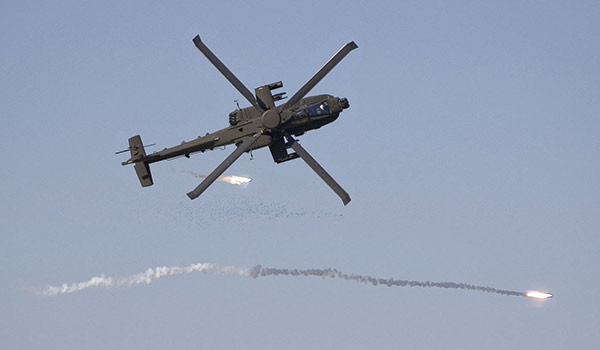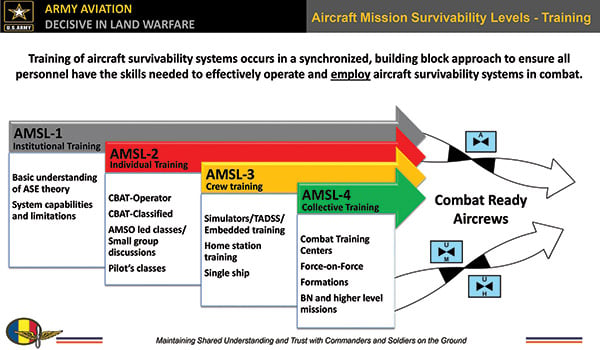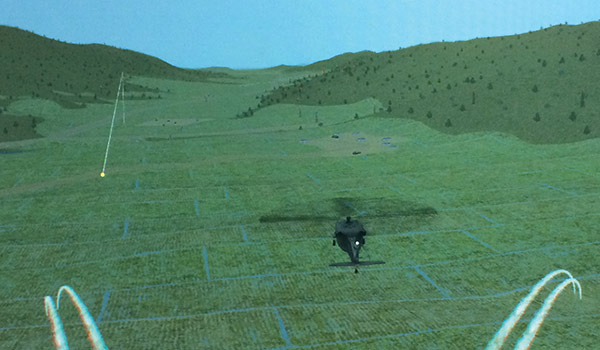
Aviation Mission Survivability / By CW5 Michael S. Kelley: When an aircraft in combat is engaged by enemy fire, the most important task is to immediately identify what threat system is being used. Threat system identification dictates the specific counter tactic or evasive maneuver used in order to achieve optimal survivability. Our current aviation force is well versed in some threat categories while other capabilities have atrophied over time. In the early stages of Operation Iraqi Freedom, misidentification of threat systems being used exacerbated the situation, presenting Army Aviation with undesirable loss rates.

CW5 Michael S. Kelley is the Branch Aviation Mission Survivability Officer assigned to the U.S. Army Aviation Center of Excellence, Fort Rucker, AL.
Assessment
In order to address this, the U.S. Army Aviation Center of Excellence (USAACE) dedicated considerable resources to determining the best approaches for ensuring the preservation of aviation combat power during combat and imminent danger operations. Over several years, the entire doctrine, organization, training, materiel, leadership, personnel, facilities and policy (DOTMLPF-P) was used in association with a capabilities based assessment to identify and implement measures to enhance aircraft survivability. During my time as the Branch Aviation Mission Survivability Officer (AMSO), I used the findings of this study as the framework to redesign the aviation mission survivability program.
ne of the identified recommendations was to develop a comprehensive training program which would increase probabilities of surviving a hybrid threat hostile environment. While assessing the current training programs, it became clear that the standardization community was focused on the individual training requirements and any crew and collective training was determined and developed by the Aircrew Training Program (ATP) commander. I would submit the standardization instructor pilots’ focus on an individual crewmember’s ability to perform their tasks is crucial to ensure the aircraft is employed effectively as a system. I would also suggest the AMSOs have not stepped up as one of the primary trainers available to the ATP commander, particularly with regard to employing aircraft survivability equipment (ASE) at the critical point of notification of threats to the aircraft and crew.
The Survivability Branch team within USAACE’s Directorate of Training and Doctrine (DOTD) conducted an analysis of the previously defined ASE training levels (ASET) and determined that Army Aviation had a robust training program to teach how to pre-flight, turn on, and adjust installed ASE, however, there was virtually nothing with regard to training how to employ ASE while being threatened by enemy surface to air systems. It was also noted that there is no defined underlined procedure for a notification of threat by ASE suites, and yet in most cases, if the aircrew did not respond immediately, instinctively and without reference, the result could be as catastrophic as failing to meet those same response criteria in a validated emergency procedure.
AMS Levels
Because of this noted deficiency in the development of the ASET levels, it became apparent that a new method of defining AMS training objectives was required. The same attributes which worked well for the majority of training requirements were maintained through integration into the newly designed AMS levels (AMSL) training. Each level distinctly supports a collective group of personnel by specifying where and/or who the designated training incorporates.
AMSL-1 remains at the institution and focuses on the fundamentals of ASE. Basic theory of operation, electromagnetic spectrum, and basic component description are a large portion of the training. AMSL-1 continues once the new aviator is introduced to their primary aircraft with location, cockpit switches and general system knowledge.

AMSL-3 is designed to get the entire aircrew to interact together during engagement scenarios, practice the employment of ASE during actions on contact training, and is developed and monitored by the unit AMSO. Initial reactions to threat system engagement must be rehearsed in order for the aircrew to react instinctively, minimizing the potential for an aircraft accident as a result of the evasive maneuvers.
AMSL-4 integrates all of the lessons learned during AMSL-3 into the collective training program. Developed with combat training center (CTC) force-on-force training in mind, this level of training also has application at home station during scheduled and briefed multi-ship training missions. Long identified as a high risk maneuver, aircraft operating as a flight, at night, under night vision devices, who break up defensively due to enemy engagement, must re-link as a flight to continue the mission ensuring success for the ground maneuver commander. Additionally, initial break up of any serial or flight of aircraft carries the potential for mishap upon reintegration. These procedures need to be rehearsed thoroughly prior to execution in the aircraft during operational employment in order to achieve the highest potential for survival during threat system engagements.
OE-Modeled Training
Rigorous, realistic training, modeled on the Operating Environment (OE) is the only way to increase crew proficiency. Aircrews must be placed in stressful situations, in this case, in response to threat engagements, in order to develop appropriate, reflexive responses to a given emergency. This is particularly true during engagements where threat avoidance requires rapid evasive maneuvers, maintaining separation from other aircraft, and obstacle avoidance. AMSL-3 and 4 afford the opportunity for standardization instructor pilot and AMSOs to work together to ensure that training is conducted within the framework of individual, crew, and collective models incorporating the S-2’s knowledge of threat systems in live and simulated exercises. Without installed ASE or an embedded training solution, AMSL-3 becomes ad hoc rather than an accurate rehearsal of crew actions when engaged by threat systems. The Aviation Combined Arms Tactical Trainer (AVCATT) is currently the best platform for integrated threat, ASE, and active opposing force capability. The addition of the Non-CrewMember Manned Module (NCM3) to AVCATT allows entire lift and cargo crews to train together. Experience has shown that talking about reacting to enemy fire has not resulted in aircrew that are responsive to threat engagements. As such, accurate rehearsal of both switch selection and evasive maneuvers is paramount to survival.

Screen capture of an enemy threat response on the Aviation Combined Arms Tactical Trainer (AVCATT).
Advanced AMSL training will be best served if Army Aviation were to invest in an accurate replicative embedded ASE training strategy which operates outside of installed ASE. In this manner, the embedded training solution would be available to every ATP commander, even when ASE was not available on their assigned aircraft due to equipment quantity limitations. Embedded AME training capability should be programmed via currently fielded mission planning systems. Using this method will provide a more rapid integration to training missions and ensure aircrews’ ability to use the training capability. With the advancement to digital cockpits, this proposal becomes nearer to reality and could translate into an active virtual threat for aircraft during basic warfare skills (BWS) at institutional training facilities.
Army Aviation is not the “United States Army Airlines Service.” Army Aviators are combat aviators, designed to enhance the ground maneuver commander’s flexibility to move across the battlefield. Army Aviation can have all of the lethality in the world; however, if we cannot survive to get to the fight, we will be unable to support our ground brothers and sisters. We need to ensure our aviators and crewmembers are the best trained to survive against a myriad of potential adversaries. The commander’s aviation mission survivability program will focus on training to ensure the preservation of aviation combat power.
CW5 Michael S. Kelley is the Branch Aviation Mission Survivability Officer assigned to the U.S. Army Aviation Center of Excellence, Fort Rucker, AL.










